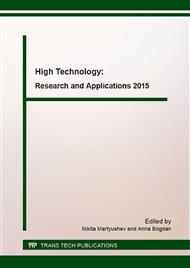p.315
p.320
p.325
p.330
p.334
p.340
p.345
p.350
p.355
Technique of Decomposition of Form Deviation for Freeform Surfaces
Abstract:
This paper presents the technique of decomposition of form deviation based on the use of wavelet filter and Fourier transform. The method allows decomposing the total deviation into systematic, random systematic (waviness) and random components. The method testing was carried out for the statistics of the deviation of the suction side of the turbine engine compressor blade. The accuracy check of the estimates of form deviations generated by the method in a series of simulated surfaces with pre-laid characteristics was carried out. The results showed that the method of decomposition allows one to estimate exactly the components of the form deviation of the simulated surfaces in their series.
Info:
Periodical:
Pages:
334-339
Citation:
Online since:
February 2016
Price:
Сopyright:
© 2016 Trans Tech Publications Ltd. All Rights Reserved
Share:
Citation:


